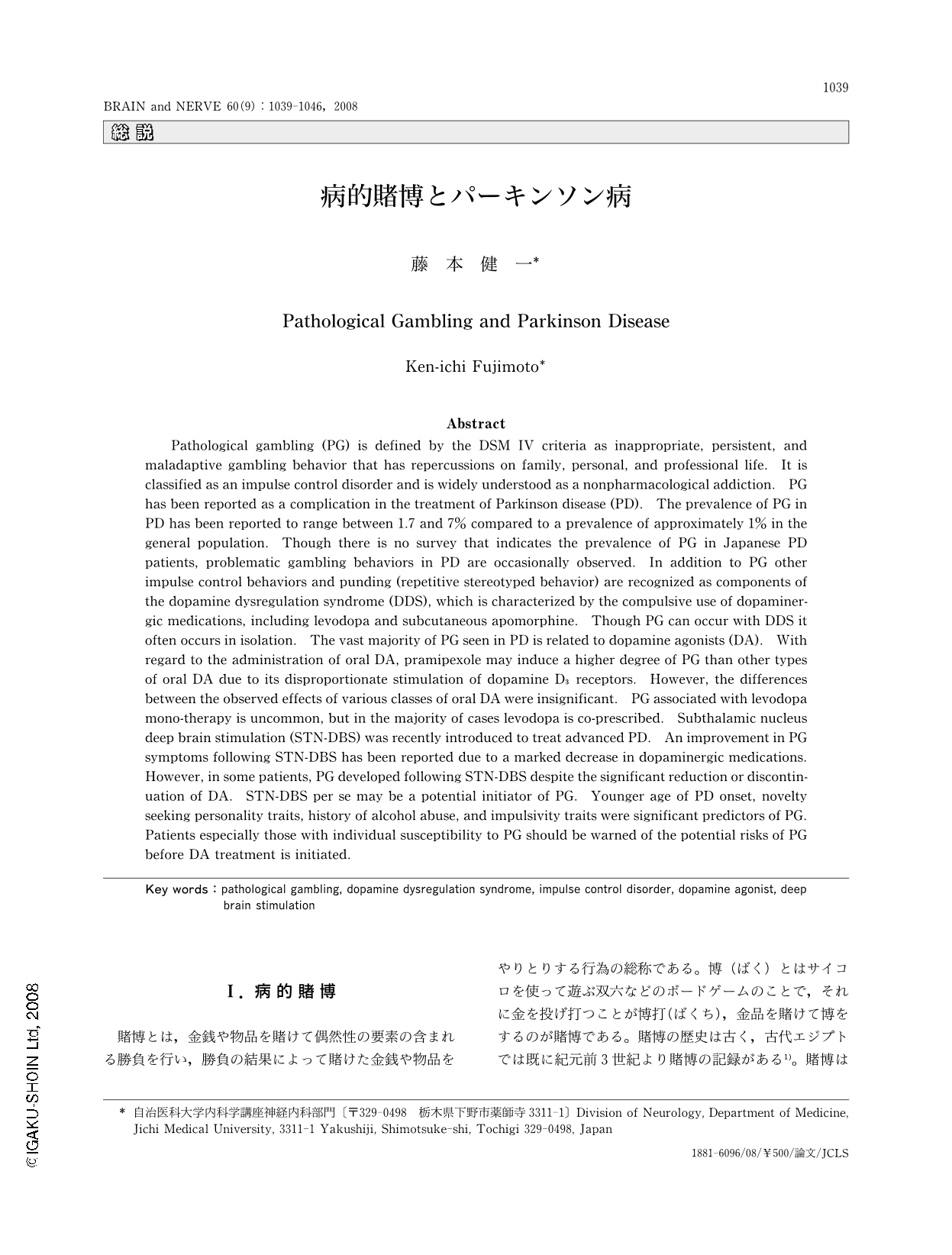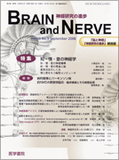Japanese
English
- 有料閲覧
- Abstract 文献概要
- 1ページ目 Look Inside
- 参考文献 Reference
Ⅰ.病的賭博
賭博とは,金銭や物品をかけて偶然性の要素の含まれる勝負を行い,勝負の結果によってかけた金銭や物品をやりとりする行為の総称である。博(ばく)とはサイコロを使って遊ぶ双六などのボードゲームのことで,それに金を投げ打つことが博打(ばくち),金品をかけて博をするのが賭博である。賭博の歴史は古く,古代エジプトでは既に紀元前3世紀より賭博の記録がある1)。賭博は人々を熱狂させ,賭博により市民生活が脅かされることも稀でなかったため,多くの為政者が賭博を規制した。わが国でも刑法185条に「賭博をした者は50万円以下の罰金又は科料に処する。ただし,一時の娯楽に供する物をかけたにとどまるときはこの限りでない」と定められている。わが国では「病的賭博」どころか,賭博そのものが違法行為である。
ここで違法行為について議論するのははばかられるが,何にでも抜け道はあるもので,違法行為には当たらないものの賭博的要素を持つ代役が用意されている。宝くじやスポーツ振興くじなどの公営くじ,競輪,競馬,競艇,オートレースなどの公営競技,そして巨大産業に成長したパチンコである。通常「病的賭博」の対象はこの代役であるが,中でもパチンコが対象となることが多い。パチンコは1回の大当たりで獲得できる玉数を増やし,確率変動を導入してハイリスク・ハイリターン化をはかり,射幸心をあおる傾向にある。パチンコは法律上娯楽なので換金はできない。ところがパチンコ店は特殊景品を渡し,古物商の景品交換所がその特殊景品を買い取り,景品交換所は特殊景品をパチンコ店に納品するという仕組みによって,事実上換金が可能である。最近ではネット上の賭博サイトや,手持ちの現金以上の金額を動かせる信用取引を利用して,株式や商品相場などの先物取引を投機的に行うネット取引など,インターネットを使った新しい手法も登場している2,3)。
Abstract
Pathological gambling (PG) is defined by the DSM IV criteria as inappropriate, persistent, and maladaptive gambling behavior that has repercussions on family, personal, and professional life. It is classified as an impulse control disorder and is widely understood as a nonpharmacological addiction. PG has been reported as a complication in the treatment of Parkinson disease (PD). The prevalence of PG in PD has been reported to range between 1.7 and 7% compared to a prevalence of approximately 1% in the general population. Though there is no survey that indicates the prevalence of PG in Japanese PD patients, problematic gambling behaviors in PD are occasionally observed. In addition to PG other impulse control behaviors and punding (repetitive stereotyped behavior) are recognized as components of the dopamine dysregulation syndrome (DDS), which is characterized by the compulsive use of dopaminergic medications, including levodopa and subcutaneous apomorphine. Though PG can occur with DDS it often occurs in isolation. The vast majority of PG seen in PD is related to dopamine agonists (DA). With regard to the administration of oral DA, pramipexole may induce a higher degree of PG than other types of oral DA due to its disproportionate stimulation of dopamine D3 receptors. However, the differences between the observed effects of various classes of oral DA were insignificant. PG associated with levodopa mono-therapy is uncommon, but in the majority of cases levodopa is co-prescribed. Subthalamic nucleus deep brain stimulation (STN-DBS) was recently introduced to treat advanced PD. An improvement in PG symptoms following STN-DBS has been reported due to a marked decrease in dopaminergic medications. However, in some patients, PG developed following STN-DBS despite the significant reduction or discontinuation of DA. STN-DBS per se may be a potential initiator of PG. Younger age of PD onset, novelty seeking personality traits, history of alcohol abuse, and impulsivity traits were significant predictors of PG. Patients especially those with individual susceptibility to PG should be warned of the potential risks of PG before DA treatment is initiated.

Copyright © 2008, Igaku-Shoin Ltd. All rights reserved.


